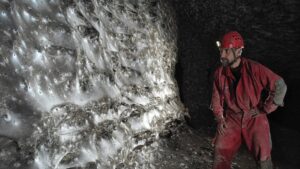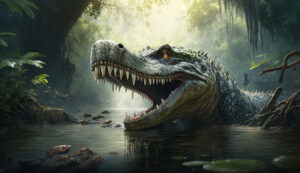 Pin
Pin Table of Contents
Snake's Nature
Although many animals are potentially dangerous to Man, most have been greatly exaggerated as killers by sensational fiction. Tales of man-eating tigers, voracious sharks and blood thirsty wolves abound, but most are pure invention. A pet dog suffering from rabies is a far greater threat than any of these animals.
The most dangerous creatures — to Man — are undoubtedly insects. There are something like three-quarters of a million types of insect, and they exist in uncountable numbers. They are a threat because many species carry disease. For example, thirty diseases, including cholera, typhoid, plague and leprosy, are transmitted by the house-fly.
Irrational fear
Far fewer people die because of the next most dangerous group of animals — snakes. Nevertheless, an irrational fear of snakes haunts people even in countries where snakes are rare.
There are no reliable estimates of the number of people who die every year from snakebite. Some experts put the figure as high as 30-40,000. But most deaths occur in remote parts of undeveloped countries where it is difficult to collect accurate information.
For example, about half the total deaths are said to occur in India. It seems highly unlikely that an incredible 20,000 people die from snakebite in India every year. What is more likely is that in remote areas a large number of unexplained deaths. are blamed on snakebite. As there are few, if any, medical facilities nearby the numbers go unchecked.
But whatever the true statistics, it can be fairly stated that snakes cause more human deaths per year than all the other land and water animals combined, with the exception of insects.
There are two types of snakes — the venomous (those that are poisonous) and the non-venomous. Of the non-venomous, the most fascinating are the constrictors.
It is commonly thought that constrictors crush their prey to death. This is not so. They coil themselves round their victim and, by applying slow but steady pressure, suffocate it. Each time the victim breathes out the constrictor increases the pressure until the unfortunate animal can breathe in so little air that oxygen is prevented from reaching the brain. At this point, the prey becomes unconscious and can be swallowed by the Snake, insensible but alive. Some constrictors, however, continue to apply pressure until the heart stops.
There is no doubt that the largest constrictors could kill and even swallow a human. The constrictors are the world’s largest snakes and six species (out of about sixty) are true monsters:
- the boa constrictor of Central and South America can grow to a maximum length of 5.8 m
- the Indian python can reach 6.1 m
- the amethystine python, found in Australia and the Philippine Islands, may grow to 7.6 m
- the African rock python reaches 9.8m
- the reticulated python of Asia may reach 10 m
- the monster of them all, the anaconda of South America, may grow to a massive 11.3 m.
Below: The world’s three, biggest – snakes are pretty large by any standards. They don’t normally attack Man, but we don’t advise hanging on the end of one!
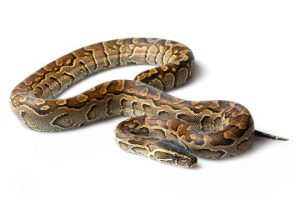 Pin
Pin  Pin
Pin  Pin
Pin These enormous snakes can take large animals as food. For example, a 4.8 metre African rock python is known to have killed and swallowed an impala (a kind of antelope) weighting 59 kg. So it is possible that a large constrictor could kill and eat an average 70 kg man, although small women and children would be the more likely victims.
But do these snakes ever attack and eat humans? Stories abound to say they do. In 1978 there was a report from the Far East stating that a dead human had been found intact inside the body of a large constrictor, and over the years several similar cases have been cited. In 1927 a 14year-old boy was said to have been eaten by a 4.3 metre reticulated python in the East Indies, and in the same year an Indian newspaper ran a news item about a Burmese salesman — Maung Chit Chine — who had been swallowed, feet first, by a python. In 1975, the Pretoria News in South Africa reported that a gardener was attacked by a 2.1 metre python and managed to escape its clutches only after a fierce struggle.
But such cases are news just because they are rare. A large constrictor is capable of killing and eating a human, but for it to do so is highly unlikely.
Snakebite
Far more people die from snakebite.
There are some 2,700 species of snake, and about 400 of these can give a fatal bite. But being bitten by a venomous snake does not mean instant death. If it did, the death rate would be far higher than it is.
So much depends on the condition of the victim and the type and position of the bite. A strong, healthy man has a better chance of surviving than a frail, elderly woman or a very young child; a bite near a vital organ is more dangerous than one to the hands or feet because the venom is carried to where it can do most damage more quickly; and obviously if the fangs are fully sunk into the flesh the bite is more dangerous than a glancing scratch.
There are two types of venom — nerve poisons which paralyse the victim, and body poisons that attack the body tissue, destroy cells and interfere with the clotting of the blood. Some venoms combine both effects.
There are two types of venom — nerve poisons which paralyse the victim, and body poisons that attack the body tissue, destroy cells and interfere with the clotting of the blood. Some venoms combine both effects.
The snake with the most poisonous venom is the southern Australian tiger snake — a mere 0.6 milligrams (three-fifths of a thousandth of a gram) of its venom will kill a 70 kg man.
Most dangerous
Of course this doesn’t make the tiger snake the most dangerous snake in the world. This dubious honour is most often awarded to the king cobra (see below), because of its size — it can grow to 4.5 m, making it the world’s longest venomous snake — its cunning, and its aggressiveness.
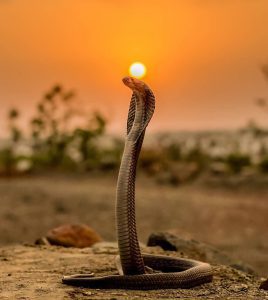 Pin
Pin 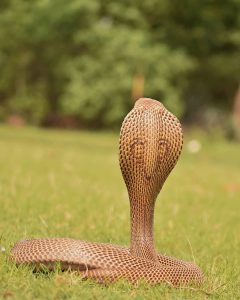 Pin
Pin Most venoms (cobra venom is an exception) can be swallowed without ill-effect. They are only poisonous if injected beneath the skin. To get their venom beneath the skin, snakes have evolved highly efficient fangs.
Most commonly, the fangs are fixed at the front of the snake’s mouth. There are grooves along the front edge of the fangs that conduct the venom into the puncture made by the fangs. The poison is held in glands placed behind the eyes; as soon as the victim’s skin is holed, muscles squeeze the gland and force the venom down the grooves into the wound.
Other species of snake have fangs at the back of the mouth rather than at the front. These snakes cannot puncture the skin and inject poison into the body in the same operation; they must chew the venom into the wound. Accordingly, most snakes of this type are harmless to Man, although the African boomslang is an exception.
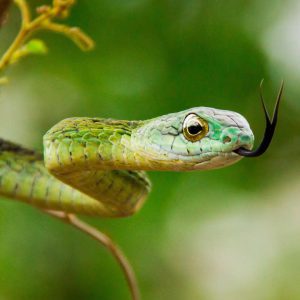 Pin
Pin 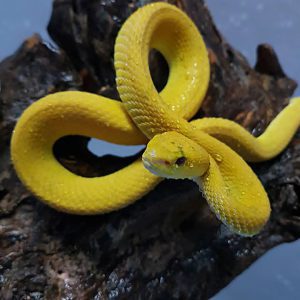 Pin
Pin 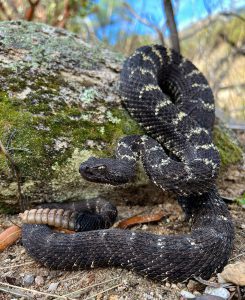 Pin
Pin 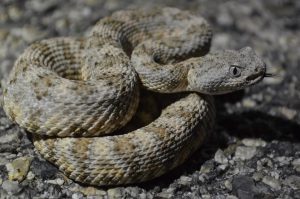 Pin
Pin 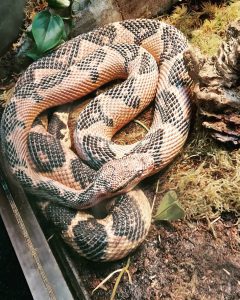 Pin
Pin The most sophisticated fangs of all are found in vipers, including rattle-snakes, bushmasters, pit vipers and others. These fangs are ‘swivelled’ — they fold back into the roof of the’ mouth when not in use, but when the animal opens its mouth to strike they spring forward. This allows the snake to have unusually long fangs that can sink deep into the victim.
 Pin
Pin Viper’s fangs also have an ingenious injection system — just like the hypodermic needle familiar to anyone who has been inoculated — through which the venom is introduced. The fangs are hollow and form a tube down which the poison passes and is forced into the wound.
Such features make venomous snakes very efficient killers. But it should be remembered that fangs and poison are primarily for disabling and/or killing small, fast-moving – mammals, birds and amphibians so they can be eaten. Their use, as a defence is secondary. Snakes do not seek out humans to attack them. That would be pointless. No venomous snake is large enough to eat even the smallest child, and generally, snakes strike at humans (or at any larger animals like horses or cattle) only if they have been disturbed and cannot escape.
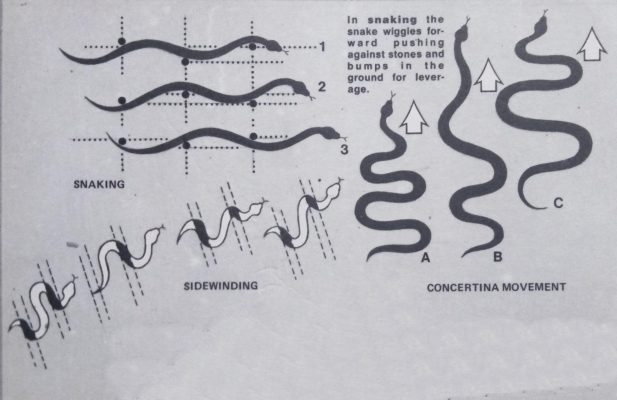 Pin
Pin In desert sand, snakes cannot get enough grip for snaking, so some species, such as the rattlesnake, move in a series of loops known as sidewinding. The head is lifted up, moved sideways, and then put down on the ground. The ‘tail’ is then progressively drawn up and laid down alongside the head. Only two parts of the body touch the ground at one time, and the snake moves along sideways. In concertina movement, peculiar to smaller snakes, the animal starts from a tightly looped position. It then stretches out its head while keeping its tail stationary. When it is fully extended, it pulls its tail up behind it.
Undeserved reputation
Most human deaths occur because someone has trodden on a snake (and most people who do this are usually barefoot and far from medical help), attempted to handle it, or inadvertently cornered it. Venomous snakes are dangerous, some are deadly if the victim is not quickly given antivenin (the serum that neutralises snake venom), but despite this, the fear they cause (and which leads to the slaughter of any snake, venomous or not) is undeserved.
There are numerous snake species around the world, and while the majority of them are harmless to humans, there are a few that possess venom capable of causing severe harm or even death. It is essential to understand that snakes usually prefer to avoid encounters with humans and will only resort to biting as a last defense mechanism. However, if cornered or threatened, some species may deliver a deadly bite.
One of the most well-known venomous snakes is the Indian cobra, also referred to as the spectacled cobra or Naja naja. Found in India, Pakistan, Bangladesh, and Sri Lanka, this snake is responsible for a significant number of snakebite fatalities in its range. The Indian cobra can inject large amounts of highly potent venom capable of causing respiratory and cardiovascular failure if left untreated.
Another lethal snake species is the black mamba (Dendroaspis polylepis), native to Sub-Saharan Africa. This snake is not only venomous but also extremely fast and aggressive, making it one of the most feared snakes on the continent. Its venom contains neurotoxins that can cause paralysis and death within hours if anti-venom is not administered promptly.
The eastern brown snake (Pseudonaja textilis) is often regarded as the world’s second-most venomous terrestrial snake after the inland taipan. Found in Australia, this snake’s venom is highly potent and responsible for numerous snakebite deaths in the country each year. The eastern brown snake’s venom affects blood clotting, muscle function, and the cardiovascular system, potentially leading to organ failure and death if a bite remains untreated.
Moving to North America, the rattlesnake family (Crotalus and Sistrurus) includes some of the deadliest snakes on the continent. These snakes are known for their distinctive rattle on the end of their tails used as a warning signal. Venomous rattlesnakes can be found throughout the United States, Mexico, and into Central and South America. Their venom is a combination of neurotoxins and hemotoxins, causing tissue destruction, organ damage, and potential death if not treated promptly.
Additionally, the saw-scaled viper (Echis carinatus) is responsible for numerous snakebite-related fatalities in various parts of Africa, the Middle East, and India. This viper is relatively small but highly venomous, with venom that affects blood clotting, causing severe internal bleeding, organ damage, and kidney failure if the bite is not treated promptly.
It’s important to note that while these snakes have the potential to cause harm or death if bitten, human fatalities are relatively rare. Prompt medical attention, the availability of anti-venom, and practicing caution in snake habitats significantly reduce the risk associated with snakebites. Additionally, education and awareness play a vital role in preventing encounters and promoting effective first aid measures when necessary.
Some of the most venomous snake species that have the potential to kill humans include:
It’s important to note that fatalities from snakebites are relatively rare as swift medical intervention and antivenom treatments are available in many regions.
Venomous snakes use their venom in two primary ways: to kill their prey and to defend themselves against potential threats. Here's a breakdown of how they utilize their venom for these purposes:
It’s important to note that while these snakes possess venom for their survival, they do not use it indiscriminately and typically reserve it for capturing food or defending themselves. Venomous snakes generally try to avoid confrontation and will only resort to biting if they feel threatened or perceive a potential prey item.
There are common myths and misconceptions about snakes that can be dangerous if believed. Here are a few examples:
It is essential to dispel these myths and misconceptions to promote a better understanding of snakes and reduce unnecessary fear or harm towards them. If encountering snakes, it is always best to exercise caution, maintain a safe distance, and seek professional help or guidance if needed.
Frequently Asked Questions about Snakes :
There are a few snake species that possess venom potent enough to kill humans. These include, but are not limited to, the Russell’s viper (Daboia russelii), Indian cobra (Naja naja), common krait (Bungarus caeruleus), black mamba (Dendroaspis polylepis), Inland taipan (Oxyuranus microlepidotus), Eastern brown snake (Pseudonaja textilis), and the gaboon viper (Bitis gabonica). However, it is important to note that snakebite fatalities are relatively rare, and antivenom treatments are highly effective in preventing death or severe complications if administered promptly.
The venom of these snakes contains toxins that can have various effects on the human body. Some venomous snakes have potent neurotoxins, which attack the nervous system, causing paralysis, respiratory failure, or cardiac arrest. Others possess hemotoxins that disrupt blood clotting, leading to internal bleeding, organ damage, and possible death. Additionally, some snakes may have a combination of neurotoxic and hemotoxic venom, making them even more dangerous.
It is exceedingly rare for a non-venomous snake to cause the death of a healthy adult human. Typically, non-venomous snake bites may result in pain, swelling, and infection, but they seldom pose a life-threatening risk. However, if a person has an underlying health condition, such as an allergy to snake saliva or a compromised immune system, a non-venomous snake bite could potentially have more severe consequences.
No, not all snakebites are fatal, even if left untreated. The outcome of a snakebite can vary depending on various factors such as the snake species, the amount of venom injected, the location of the bite, the size and health of the victim, and the time taken to seek medical treatment. However, it is crucial to remember that seeking immediate medical attention is always the best course of action to prevent serious complications or death.
The specific snake species mentioned earlier are primarily found in certain regions of the world. For example, the Russell’s viper and Indian cobra are commonly found in South Asia, while the black mamba resides in sub-Saharan Africa. The Inland taipan is native to Australia, and the Eastern brown snake is found in Australia and parts of Papua New Guinea. The gaboon viper is endemic to various parts of Africa. It is important to familiarize yourself with dangerous snake species in the regions you might be traveling to, as different places harbor different venomous snakes.
To minimize the risk of encountering lethal snakes, it is advisable to exercise caution and follow these precautions:
- Stay alert and avoid venturing into snake habitats whenever possible.
- Wear appropriate footwear and clothing to reduce the risk of accidental bites.
- When hiking or camping, be cautious when placing hands in dark or hidden areas where snakes might reside.
- Avoid sticking hands or feet into places that are out of sight but can harbor snakes, such as rock crevices or leaf piles.
- If in an area known to have venomous snakes, be vigilant and watch where you step or sit, especially in tall grass or under rocks.
- If traveling to regions with a high prevalence of venomous snakes, consider seeking local guidance and knowledge to enhance awareness and safety.
Remember that snakes play an important role in our ecosystems, so rather than seeking to kill them, it is best to give them space and seek professional help if you encounter one in an unsafe situation.


















